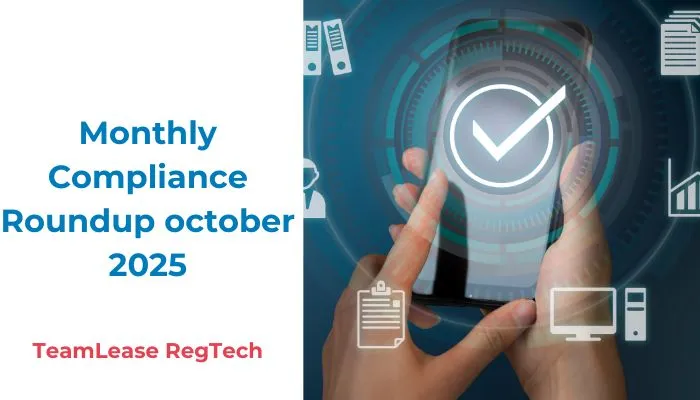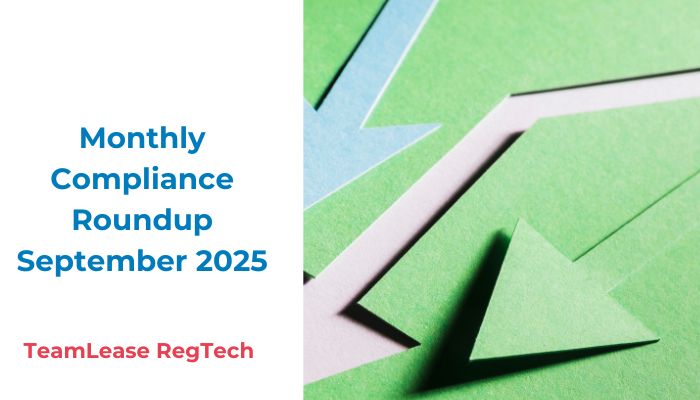The logistics and supply chain sector is vital to the economy of the nation. A synchronised progression and regression of commodities and services characterises an effective and streamlined supply chain. It encompasses storage, warehousing, transportation, packaging, unitisation, inventory management, and distribution, among other facets of the supply chain.
The enhancement of critical infrastructure presently propels a sector-wide transformation, the growing adoption of sustainable practices, and the intensifying emphasis on digitalization. Over 22 million individuals depend on it for their livelihood, contributing approximately 14% to the GDP. A market valuation of $215 billion is anticipated by 2024. Additionally, the warehousing industry is projected to reach $20 billion within the next two years.
The supply chain disruptions caused by the pandemic compelled an expedited implementation of technology-driven solutions. Additionally, the Union Government has initiated initiatives (GatiShakti, Bharatmala, and Sagarmala) with the objective of constructing novel transportation
infrastructure that supports multiple modes of transportation. Additionally, the government is implementing technological and digital solutions to propel the nation into the top 25 of the Logistics Performance Index.
The expansion of the supply chain and logistics sector is being hindered by regulatory cholesterol. A single-entity MSME, which operates from a single state and maintains a single warehouse and corporate office, is required to comply with 648 requirements annually. Over 36% of these provisions (226) include incarceration penalties as a consequence of non- compliance. The provisions in question have been implemented to a greater extent (54%), by
state governments. Furthermore, a multitude of compliance documents are present, including certifications, registrations, approvals, licences, permissions, consent orders, and consent orders, which results in redundant and intricate paperwork.
Businesses are regulated by compliance with environmental, health, and safety (EHS), finance and taxation, secretarial, commercial, and labour obligations. By incorporating industry-specific compliance measures, organisations frequently encounter convoluted processes that cause
disruptions and delays in compliance operations. The following significant acts establish the industry’s regulatory framework:
- Warehousing (Development and Regulation) Act, 2007
- Warehousing
(Development and Regulation) Registration of Warehouses Rules, 2017
The Warehouse Manual for Operationalising of Warehousing (Development &
Regulation) Act, 2007 - The Carriage by Road Act, 2007, and Carriage by Road Rules, 2011
A vital component of supply chain management and logistics is warehousing. Consequently, regulations pertaining to storage facilities are likewise relevant to these enterprises. The responsibilities encompassed in this list are as follows: furnishing insurance coverage for goods
deposited in the warehouse, ensuring the quality and quantity of stored goods are maintained, maintaining complete and accurate records and accounts of all transactions, performing daily warehouse cleaning and painting of walls and ceilings every three years, and operating a physical analysis laboratory within the warehouse if the goods are agricultural. Additionally, they must acquire industry-specific, one-time approvals. The aforementioned credentials comprise, among others, approvals pertaining to labour safety and health, the Foreign Trade (Development and Regulation) Act, 1992 and the Foreign Trade (Regulation) Rules, 1993,
registration as a packer under the Legal Metrology (Packaged Commodities) Rules, 2011, and the Import Export Code (IEC) Certificate.
The compliances mentioned above offer valuable insights into the ever-changing and intricate regulatory landscape within which these organisations function. An annual publication of more than 4,000 regulatory updates by 2,233 websites maintains the dynamism of the compliance ecosystem. As a consequence, it becomes impracticable for a compliance officer to supervise every on-going compliance, disregarding issues pertaining to updates or amendments.
Considerable effort has been dedicated to the journey towards digitalization. The implementation of the e-Sanchit portal has enabled the paperless conduct of export-import transactions. The implementation of the Goods and Services Tax (GST) has streamlined the flow of goods and brought about standardisation and uniformity in the tax regime. The e-Way bill has increased the efficacy of nationwide monitoring of the movement of goods. FASTag has facilitated and expedited toll payments, thereby streamlining logistical operations considerably.
These exemplify a few examples of the ongoing endeavours to simplify matters pertaining to compliance. Nevertheless, these intricacies are multifaceted and entirely contingent upon the regulatory framework and context. As the majority of logistics and supply chain organisations
expand, compliance management becomes exponentially more complex. An expansion in the business’s scale and geographical presence renders obsolete ad hoc, paper-based, and human-reliant procedures. The volume of relevant regulations, filings, and compliances makes it difficult for compliance officers to monitor ongoing, pending, and forthcoming obligations.
The implementation and adjustment to digital solutions can assist these organisations in establishing an environment for timely, accountable, and transparent compliance. Organisations must integrate technology-driven procedures into their compliance management systems to ensure they remain informed about regulatory developments and compliance obligations. The implementation of a technology-driven compliance culture will significantly contribute to the enterprise’s adherence to legal regulations.
Implementing intelligent and automated compliance solutions improves an organisation’s visibility and control over its compliance functions. These features ensure that senior management remains informed, vigilant, and at the forefront of developments. The solutions’ tracking and management functionalities serve as a robust defence mechanism against oversights, setbacks, and non-compliance. The incorporation of customisable checklists, integrated databases, and real-time regulatory updates renders modern technology platforms an essential component for any organisation. By monitoring real-time regulatory changes on thousands of government websites, they are able to provide pertinent updates within twenty-four
hours. This facilitates employers in promptly addressing crucial updates.
Moreover, these platforms facilitate the organisation’s overall compliance programme. It integrates all paperwork, including tamper-proof, digital, and verified copies of each document. The central digital document repository functions as a centralised location where compliance paperwork can be stored, managed, and accessed. Digitally integrated document management enables employers to reallocate their attention to higher-priority tasks by conserving valuable time, energy, and resources.
As regulatory oversight of every aspect of an organisation expands, compliance is no longer the compliance department’s sole responsibility. It is the duty of Key Managerial Personnel (KMPs) to establish unambiguous roles and responsibilities with regard to compliance throughout all organisational levels and departments. Effective compliance management requires that internal processes for interdepartmental and inter-level coordination be enforced with equal measure of significance. In addition to corrective interventions and period assessments, risk evaluations and risk assessments must be incorporated into the compliance agenda.
With the understanding of the industry’s critical nature, in 2022, the National Logistics Policy (NLP) was declared with the objective of reducing logistics expenses from 16% of GDP to the international average of 8%. The government is obligated to implement four significant measures in accordance with the policy: Service Improvement Group, Integration of Digital Systems (IDS), Unified Logistics Interface Platform (ULIP), and Ease of Logistics (ELOG). A technology-driven framework will be implemented under ULIP to facilitate the secure, private, and real-time transmission of information. As a result, service providers, producers, regulatory bodies, customs, and shippers will be better connected. This will result in an exponential increase in logistics visibility and a reduction in transportation cost-accumulating delays.
Additionally, an increasing number of startups will have the capacity to implement automation to enhance reliability and promote service standardisation.
Through this process, NLP will support the formation of a cohesive regulatory framework and institutional structure that oversees the sector. As a result, multimodal logistics parks (MMLPs) will emerge as significant markets. Logistical improvements will facilitate first-mile and last-mile
connectivity. Furthermore, there will be subsequent growth in various sectors such as manufacturing, cold storage, export-import, and others.
The policy will additionally gain advantages from the outcomes of infrastructure initiatives such as the Gati Shakti Programme, Sagarmala Programme, and Bharatmala Programme, which are specifically designed to address the nation’s infrastructure deficit and enhance connectivity. The
PM Gati Shakti National Master Plan provides the foundational infrastructure pipeline upon which the success of the NLP is heavily dependent. The objective of the PM Gati Shakti National Master Plan is to construct a nationwide network of multimodal logistics and transportation infrastructure. Its objective is to create a streamlined and effective transportation system by integrating the road, rail, air, and waterway transportation networks. The plan’s defining characteristics are the development of multi-modal logistics parks, the improvement of last-mile connectivity, the implementation of technology and digital platforms, and the promotion of sustainable transportation.
In the future, digitization will be an even greater factor in streamlining logistical procedures. An increasing number of organisations are migrating to the cloud to manage and regulate their supply chain and logistics operations. It will assist these organisations in implementing data- driven business strategies and increase their visibility. By advancing this paradigm shift by incorporating blockchain technology, organisations can enhance the effectiveness and efficiency of their inventory management and overall business activities.
As a result, the PM Gati Shakti National Master Plan prioritises the development of an integrated network and infrastructure to increase the efficiency of human resources and services (processes, digital systems, and regulatory framework). At present, the proportion of road freight transport in the United States exceeds 60%, whereas the worldwide mean stands at
25%. There is an urgent requirement to automate the logistics sector at this time. Furthermore, substantial investments are required in the infrastructure that supports logistics and transportation services. Truckers can enhance their overall efficiency and reduce costs by utilising cutting-edge logistics marketplaces. Digitization-driven technological advancements, including but not limited to RFID, GPS, and warehouse management systems, represent an additional example of transformation facilitated by digitization.
The importance of efficient data management increases significantly due to the volume of data that is produced, gathered, transmitted, examined, stored, and discarded. A recent piece of legislation, the Digital Personal Data Protection Act, 2023 (DPDP Act), attempts to resolve concerns regarding the safeguarding and confidentiality of sensitive information while it is in
transit or at rest. Organisations must proactively anticipate the responsibilities that will ensue in accordance with the DPDP Act and its delegated legislation. In order to establish the necessary infrastructure and guarantee data privacy and protection protocols for their contractors and
partners, organisations will need to evaluate their obligations and liabilities in the data age.
The logistics and supply chain sector is an indispensable cornerstone that will bolster the economy as it advances towards reaching the $10 trillion mark. This fundamental industry will
empower India to become the “Factory to the World” well beyond 2030. The seamless and effective transportation of raw materials and finished products will enable the manufacturing sector to demonstrate its prowess and advance towards a $30 trillion economy by 2047, constituting the pinnacle of our ‘Amrit Kaal’.
You might also be interested to read:Unraveling the Phenomenon of Loud Quitting: Strategies to Preserve Brand Reputation and Employee Retention






